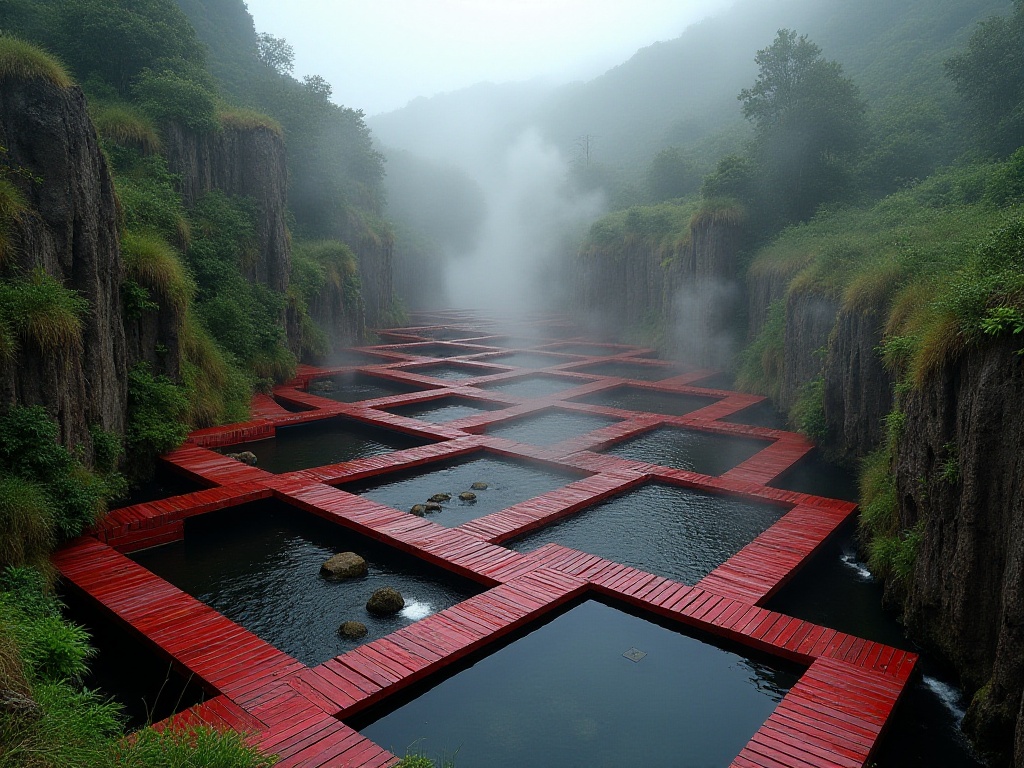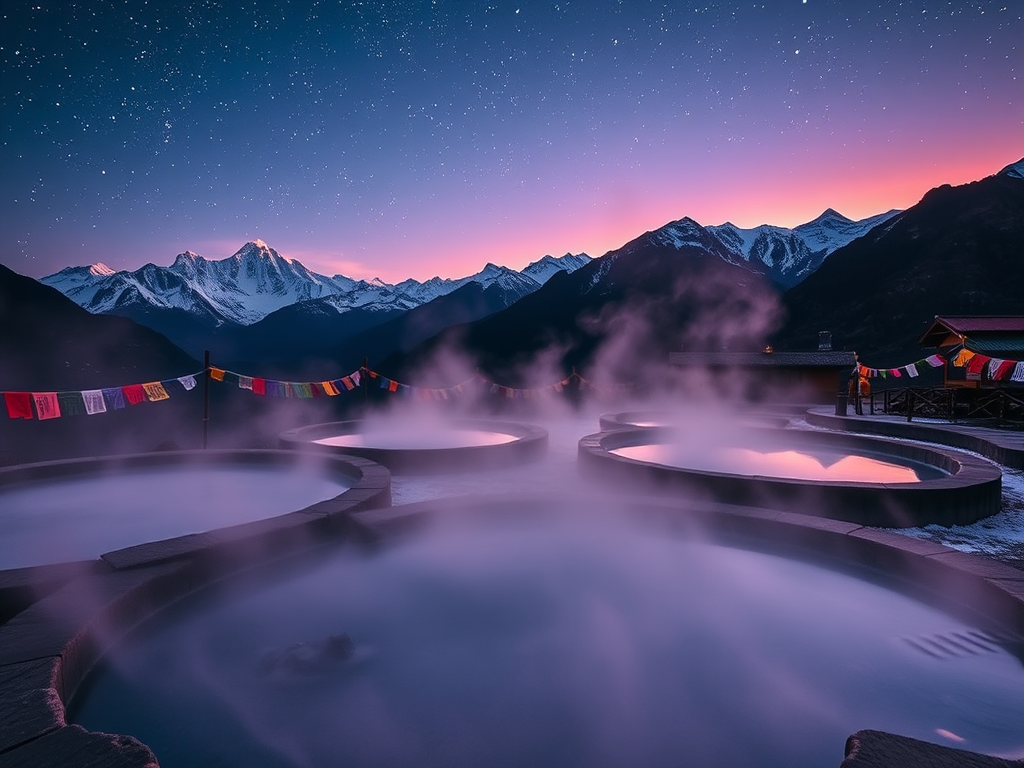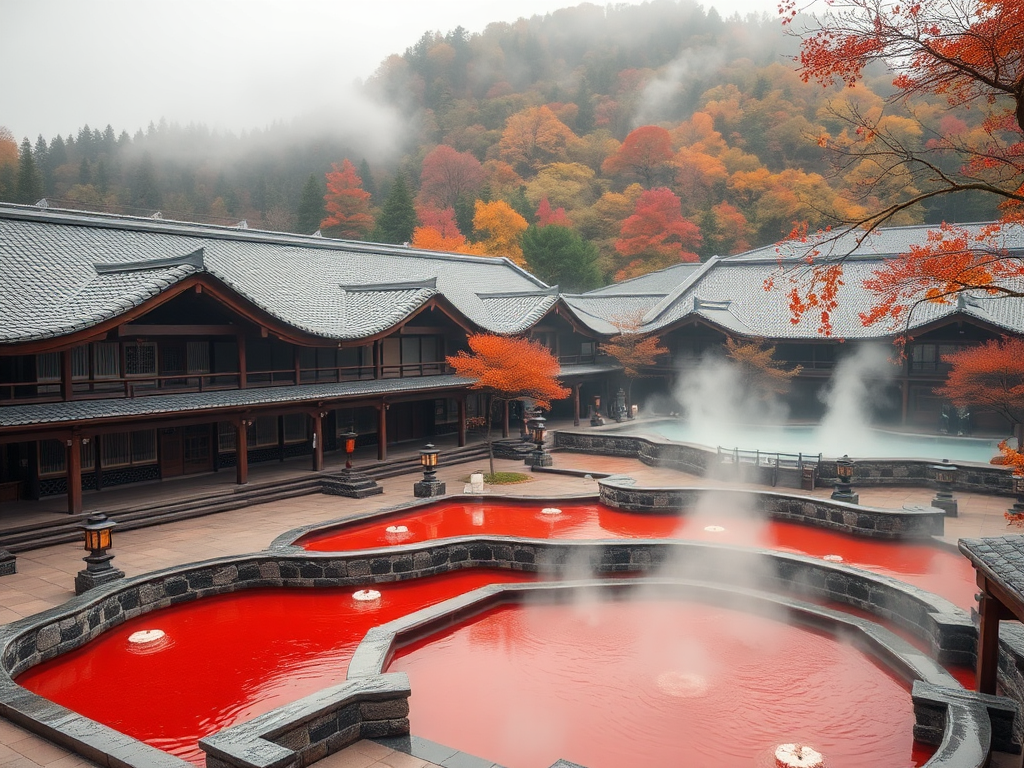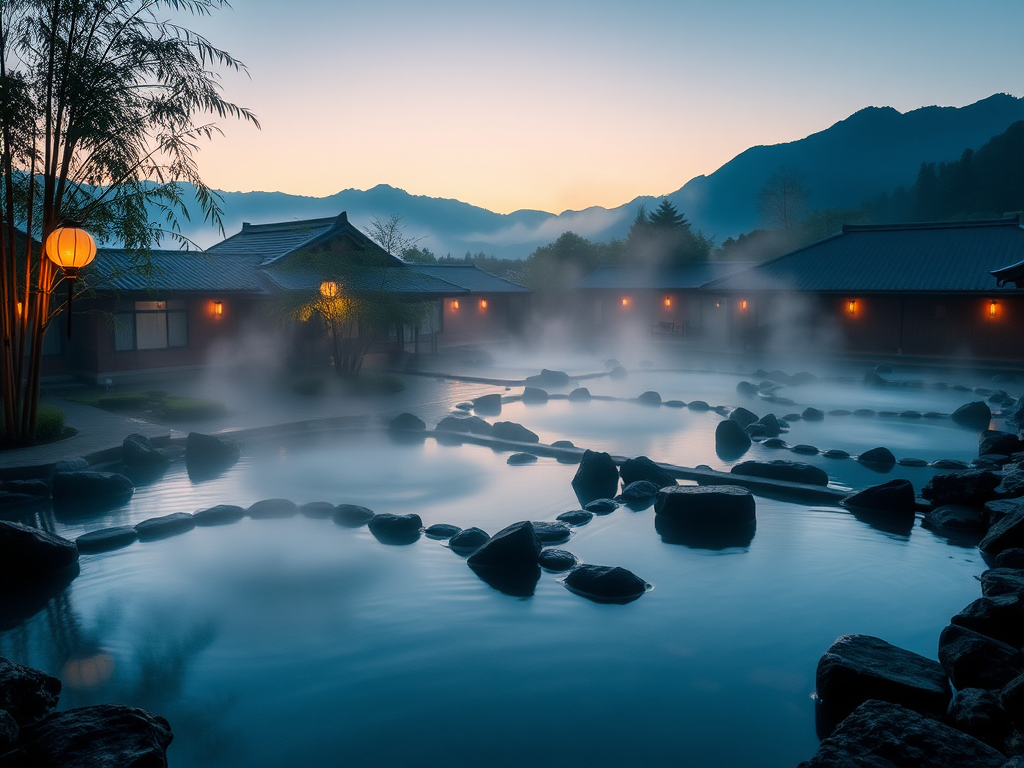First Encounter with the Blue Lagoon
Have you ever imagined that in the cold Nordic country of Iceland lies one of the world's most dreamlike hot spring destinations? Let me take you into the Blue Lagoon, known as the "sapphire on Earth's surface."
When I first visited the Blue Lagoon, driving from Keflavik International Airport, I could see wisps of white steam rising from afar. As the vehicle approached, that stunning milky blue-green thermal water gradually came into view, as if I had stumbled upon an alien world.
The Blue Lagoon is not naturally formed but was accidentally created during the operation of a geothermal power plant in the 1970s. After the power plant extracted geothermal water from deep underground for electricity generation, the mineral-rich wastewater flowed into the surrounding lava landscape, forming this unique geothermal spa over years of sedimentation.
Bathing Experience
To fully enjoy the Blue Lagoon, it's recommended to set aside at least 4 hours. The spa area covers 9,000 square meters, with water temperature maintained between 37-39°C year-round and depths varying from 0.8 to 1.6 meters. Soaking in the warm, comfortable thermal waters, surrounded by Iceland's distinctive black volcanic rock landscape, beneath the ever-changing Nordic sky, creates an unforgettable experience.
The Blue Lagoon's water is rich in silica, sulfur, sodium chloride, and other minerals, offering excellent skincare benefits. The spa area features white silica mud mask stations where you can freely apply the famous white silica masks, reportedly beneficial for improving skin condition. I was initially concerned about allergies during my first use, but my skin indeed became smoother and more refined afterward.
Surrounding Facilities
Beyond the outdoor spa area, the Blue Lagoon offers comprehensive amenities. The modern changing rooms are equipped with lockers, shower facilities, and hair dryers. There's a swim-up bar in the spa area where you can enjoy Icelandic specialty drinks while soaking.
For a more private experience, you can book the Blue Lagoon Clinic Hotel. The hotel features 62 rooms, each offering panoramic views of the Blue Lagoon. I especially recommend their Lava Restaurant, where you can dine while enjoying spa views, and their Icelandic seafood cuisine is excellent.
Best Season
The Blue Lagoon is open year-round, with each season offering unique features. Bathing under the midnight sun in summer is a unique experience, while winter visitors might encounter spectacular Northern Lights. Based on my multiple visits, September through March is the best period for aurora viewing, when you can soak in the warm springs while gazing at the stars, and with luck, witness an amazing aurora show.
However, note that winter temperatures can drop below -10°C, making the brief journey from the changing room to the thermal pool quite challenging. It's advisable to bring non-slip slippers as the ground may be icy.
Practical Tips
Here are some useful suggestions for visiting the Blue Lagoon:
Advance booking is essential, possibly months ahead during peak season. Ticket prices vary by season and time slot, with basic packages including admission, silica mud mask, and one drink ranging from 50-120 euros.
There are several transportation options from Reykjavik to the Blue Lagoon. The most convenient is booking a shuttle bus, taking about 45 minutes round trip. If driving, simply navigate to "Blue Lagoon Iceland" - parking is free.
Showering before and after bathing is basic etiquette in Icelandic spa culture. Due to the high mineral content, contact lens wearers should remove them, and it's advisable to keep your hair out of the water to prevent dryness.
Exploring the Surroundings
The Blue Lagoon is located on the Reykjanes Peninsula, with many worthwhile attractions nearby. For example, the Geysir geothermal area features spectacular eruptions every few minutes. Thingvellir National Park marks the boundary between the Eurasian and North American plates, where you can experience standing between two continents.
Reykjavik city center, about 40 minutes from the Blue Lagoon, is also distinctive. Hallgrímskirkja's modern architectural design is impressive, and the Sun Voyager sculpture is a must-visit photo spot. The old harbor area is lined with diverse seafood restaurants.
Alternative Options
If you find the Blue Lagoon too commercialized or expensive, Iceland offers many other hot spring options. Mývatn Nature Baths provide a more natural environment with fewer tourists. Sky Lagoon, closer to Reykjavik, blends modern design with traditional Icelandic spa culture and is also a good choice.
At this point, are you already planning your own Icelandic spa journey? As a frequent visitor, I believe the Blue Lagoon is absolutely worth a dedicated visit. Of course, when to go and how to plan your trip depends on your specific circumstances. If you've experienced Icelandic hot springs, feel free to share your story in the comments.
Deep Thoughts
Before concluding this share, I'd like to discuss some thoughts on the future development of hot spring tourism. With global climate change, sustainable use of geothermal resources becomes increasingly important. The Blue Lagoon is a great example of converting industrial byproducts into tourism resources.
In recent years, sustainable tourism concepts have gained increasing attention. How spa destinations like the Blue Lagoon balance commercial interests with environmental protection, and how to control visitor numbers while providing quality service, are topics worth in-depth discussion.
From a broader perspective, hot spring tourism is not just a leisure activity but a cultural experience. Different regions' spa cultures reflect their geographical features, historical traditions, and lifestyles. For instance, Icelanders' love for hot springs is inseparable from their generations of life on this land where volcanoes and glaciers coexist.
In today's globalized world, how do you think we should maintain the uniqueness of local spa cultures while developing hot spring tourism? Feel free to share your thoughts in the comments.







